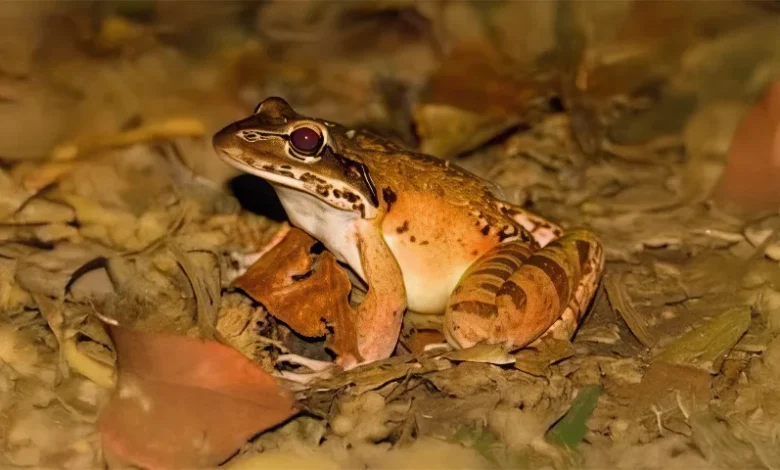Crapaud

The Crapaud, locally known as the Mountain Chicken (Leptodactylus fallax), is a critically endangered species of frog, indigenous to Dominica and Montserrat. Despite its nickname, the Crapaud is a frog, known for its large size and cultural significance in Dominica. Its population has declined sharply due to overhunting, habitat loss, and the impact of the amphibian chytrid fungus.
Crapaud Description and Habitat
The Crapaud is one of the largest frogs in the world, with adult specimens reaching up to 22 cm in length and weighing around 1 kg. This nocturnal amphibian thrives in the montane forests of Dominica, particularly in the island’s western regions. It feeds on a diverse diet, including insects, small mammals, and other amphibians, and plays a vital role in maintaining ecological balance in its habitat.
Cultural Significance
In Dominica culture, the Crapaud holds a unique place. Historically, it was a staple in the local diet, valued for its meat’s resemblance to chicken, which led to its nickname, “Mountain Chicken.” The frog is also a national symbol and is depicted on Dominica’s Coat of Arms, symbolizing the island’s commitment to preserving its unique natural heritage and biodiversity.
Conservation Efforts and Challenges
Due to rapid population declines, Dominica’s Forestry, Wildlife & Parks Division has partnered with international conservation organizations to implement various protective measures, such as captive breeding programs and habitat restoration. The chytrid fungus remains the primary threat, having devastated amphibian populations globally. In Dominica, natural disasters like hurricanes have further impacted the Crapaud’s fragile habitats, complicating conservation efforts.
In response to this crisis, the Mountain Chicken Recovery Programme was established to work alongside local governments and conservation organizations. This program focuses on implementing captive breeding and disease management initiatives aimed at preserving the species. Researchers continue to develop strategies for disease management and reintroducing captive-bred individuals into their natural environments, emphasizing sustainable recovery.




